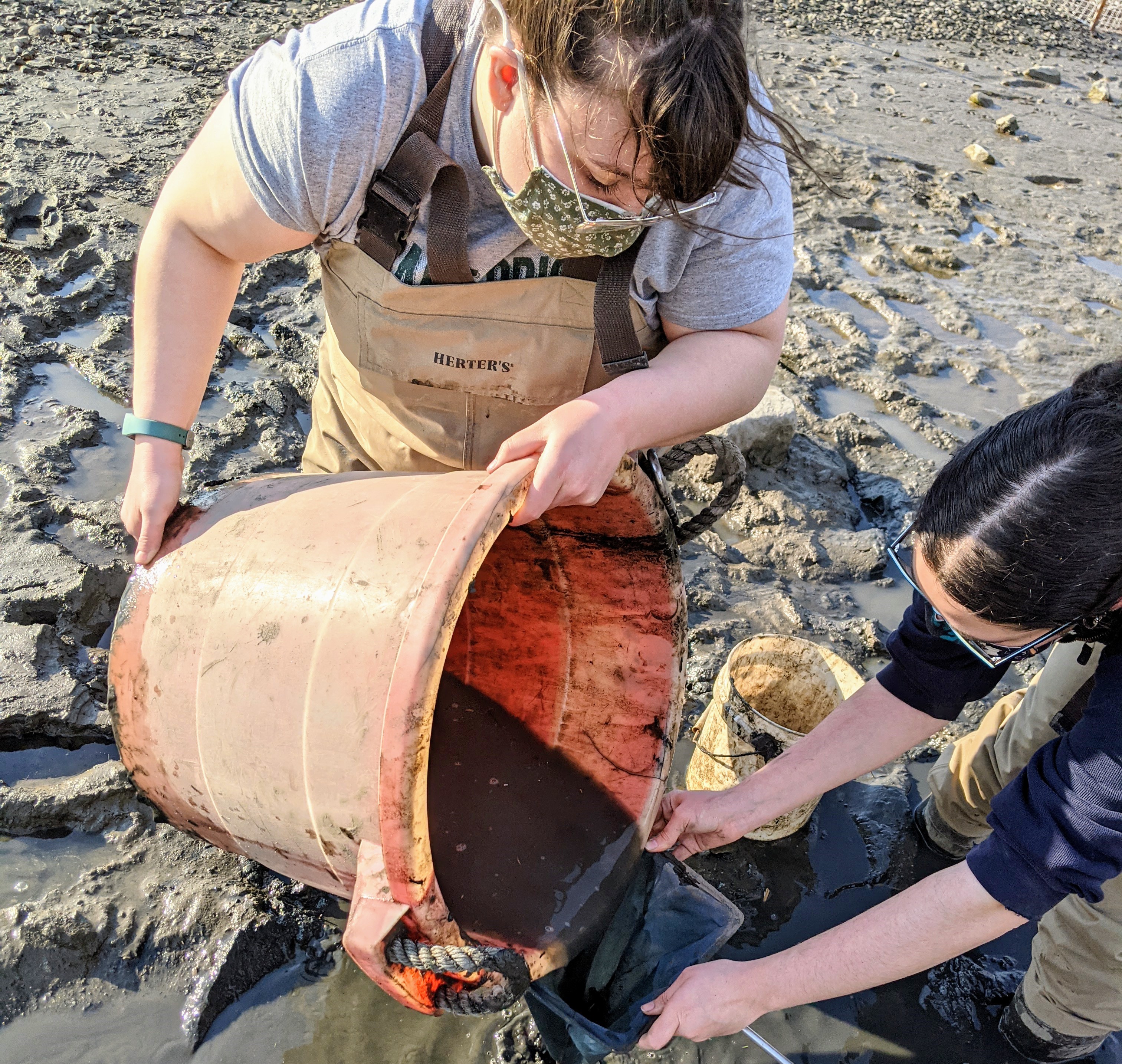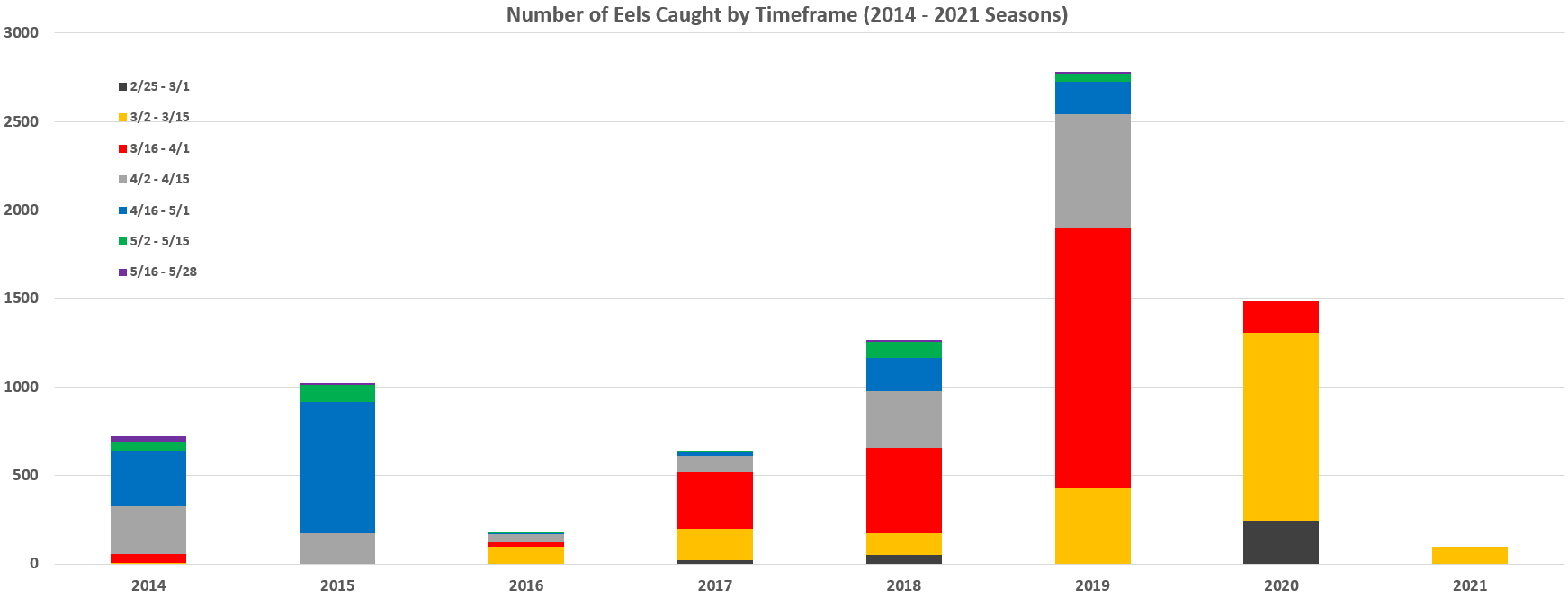2021 Eel Sampling Season Begins

For the 9th straight year, CURB is 1 of about 15 sites participating in the NYS DEC's American Eel Migration Project. This study tracks migrating glass eels from the Atlantic Ocean into the Hudson River Estuary each winter/spring. We use a fyke net stationed in our tidal marsh to collect the eels, and then staff and volunteers count them each afternoon. In addition to our counts, we also weigh the eels and record weather and water quality data. We installed our fyke net on February 24th, and the entire sampling season lasts about 14 weeks.
Since the season just started, we thought we would take a look back at our historical data. The tables below show the number of eels caught by date as well as the water temperature for each specific date.


What is clear from the first table is that the number of eels caught early on varies quite a bit from year to year. For example, let's focus on the number of eels caught by 3/15. In 2015 we were still waiting for our first eel. However in 2020 we had already caught 1,308 eels by the 15th!
There are many factors which can influence when the eels begin to migrate into the Hudson. One such factor is water temperature. It is thought that the eels begin to move into the Hudson once the water gets above 40 degrees. In 2015 the water was quite cold early on in March. However, things got off to a warmer start last season and we saw much higher numbers early on. Again, there are other factors at play, but water temperature can often be a good indicator of when the eels will arrive.
The graph below shows when the migration peaked for each of our sampling seasons.

In 2014 and 2015, those seasons peaked in mid to late April. 2016 had low counts across the board, though there was a slight peak in early March. 2017 - 2019 clearly peaked in mid to late March, and 2020 also got an early start before the net was pulled due to the pandemic. The trend in recent years has been for an early start to the season. For the most part these years followed mild winters. Our current season has gotten off to a relatively slow start, at least compared to recent years. But we also had a cold and snowy February so that could be a factor.
It will be interesting to see how this season plays out when compared to past years. Please keep an eye on our social media (@slccurb) and website for lots of eel related content. Our daily eel data may be accessed here.